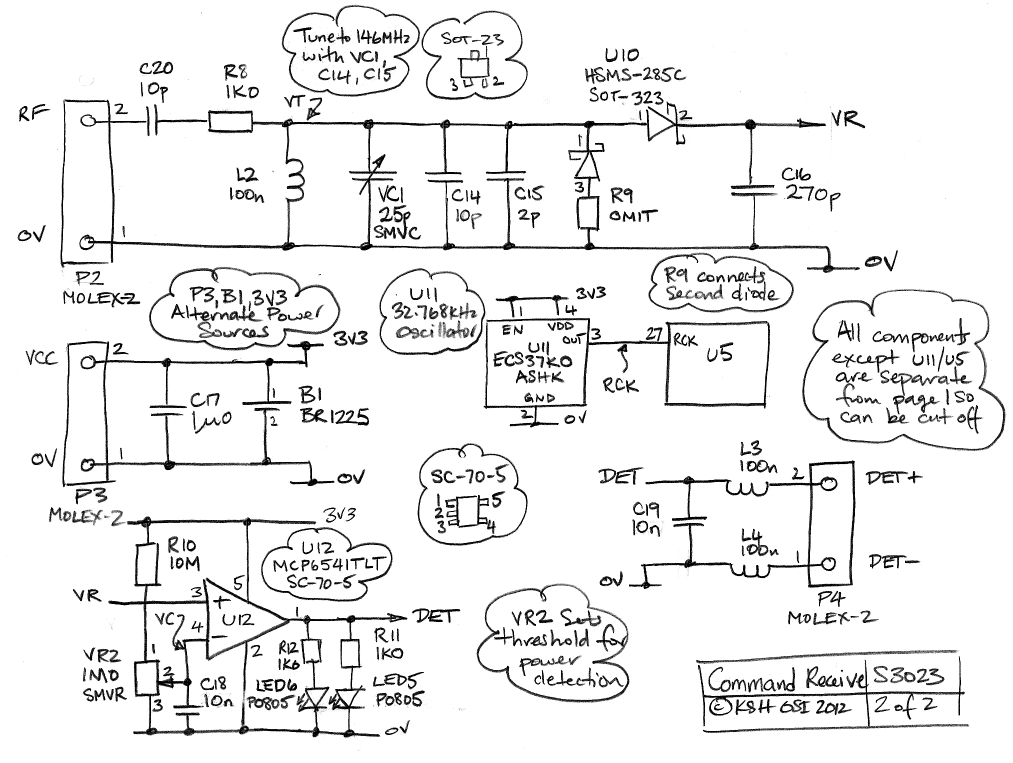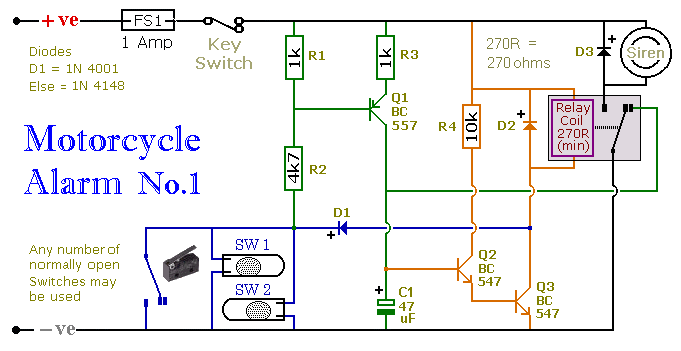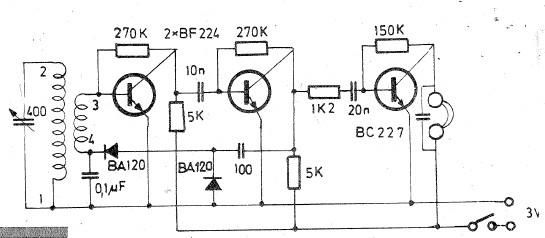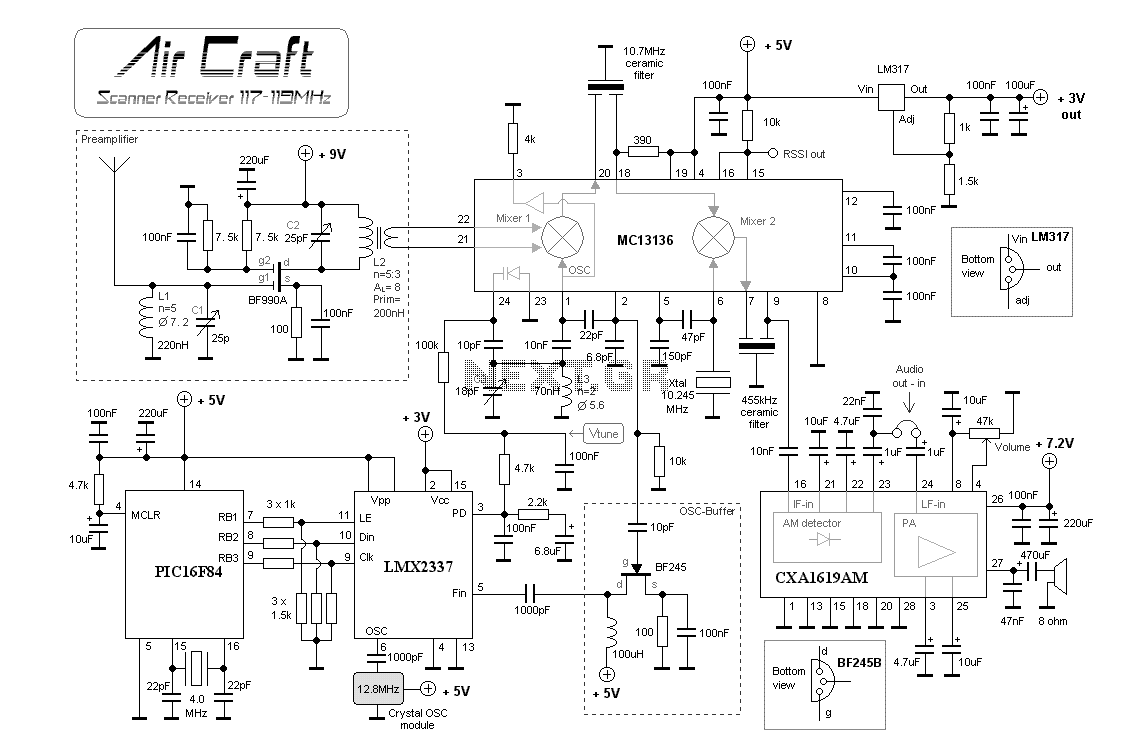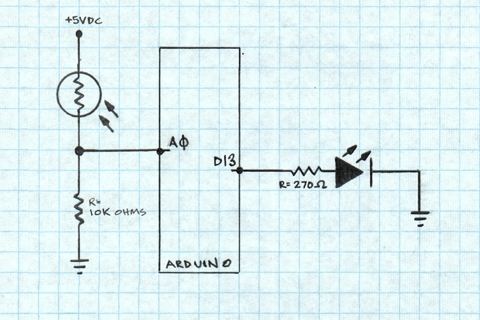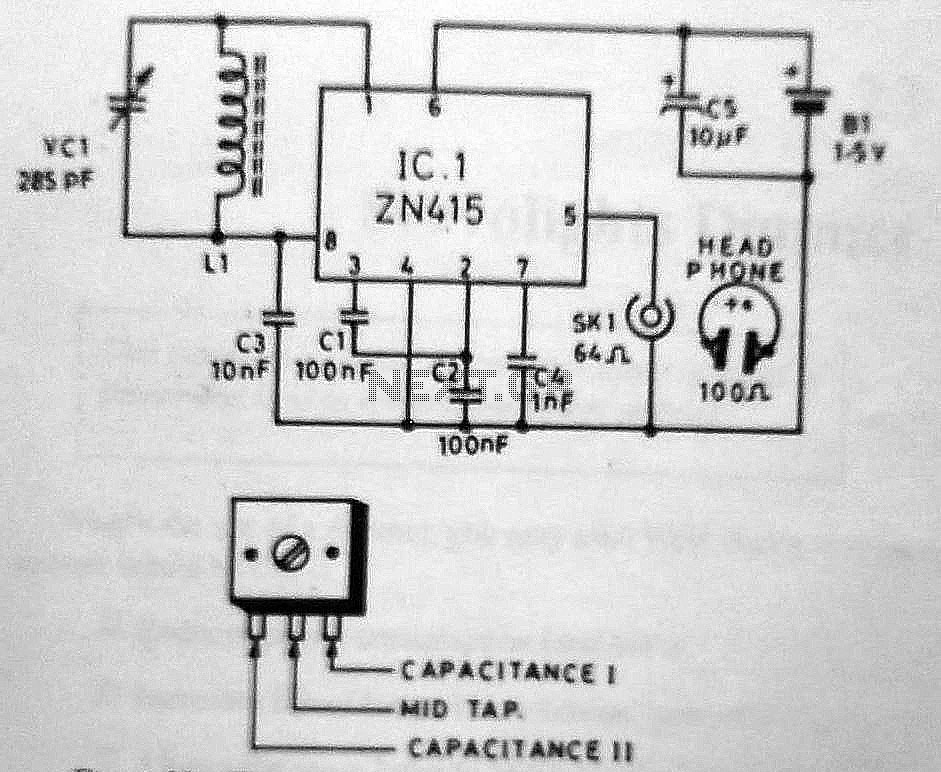
arduino based thermorbios weather station receiver
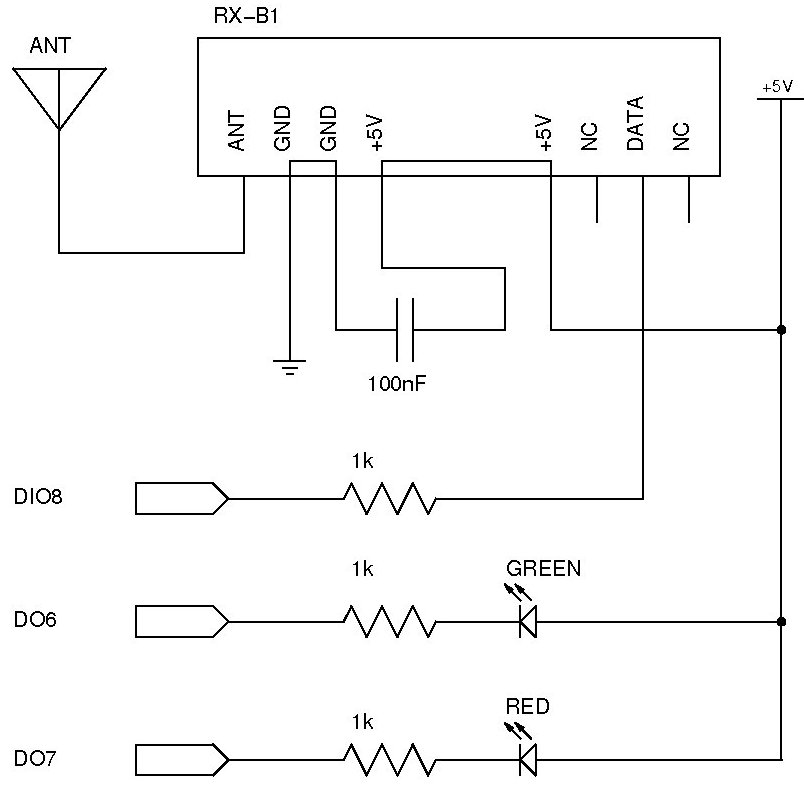
The documentation and code cleaning for the Jaycar Thermor/BIOS branded wireless weather station receiver has been completed. The code is based on the Practical Arduino weather station receiver project. The process involved analyzing the RF signal from the weather station using a soundcard and decoding packets over the course of a week. The RF receiver is connected to pin 8 of the Arduino through a 1k resistor, and an LED is connected to pin 6 via a 330-ohm resistor. For more details, refer to the Practical Arduino schematic, which depicts a similar circuit, excluding the LED on pin 7. The sketch has been uploaded to GitHub for others to access. There is a minor to-do list remaining for future completion.
The wireless weather station receiver circuit utilizes an RF receiver module to capture weather data transmitted wirelessly. The core component of the circuit is the Arduino microcontroller, which processes the incoming RF signals. The RF receiver is connected to pin 8 of the Arduino through a 1kΩ resistor, ensuring that the signal is appropriately attenuated to protect the microcontroller's input pin from excessive current. This connection allows the Arduino to read the digital data transmitted by the weather station.
An LED is incorporated into the design, connected to pin 6 through a 330Ω resistor. This LED serves as an indicator, providing visual feedback when the Arduino receives a valid signal. The choice of a 330Ω resistor is crucial, as it limits the current flowing through the LED, preventing damage and ensuring optimal brightness.
The circuit design follows the general layout presented in the Practical Arduino schematic, with the notable exception of the LED connection on pin 7, which has been omitted in this implementation. This adaptation allows for a simplified circuit while retaining the essential functionality of the weather station receiver.
The RF signals are decoded in the Arduino's firmware, which has been developed based on extensive analysis of the signal characteristics. The development process involved using a soundcard to capture and analyze the RF signal, followed by a methodical decoding of the data packets. This step was critical in understanding the communication protocol used by the weather station, ensuring accurate data retrieval.
For those interested in replicating or modifying the project, the complete code is available on GitHub. Future enhancements and modifications are planned, as indicated by a small to-do list, which will be addressed at a later date. This project exemplifies a practical application of wireless communication and microcontroller integration in weather monitoring systems.Have finished documenting/cleaning the code for my Jaycar el-cheapo Thermor/BIOS branded wireless weather station receiver. The basis for the code comes from the Practical Arduino weather station receiver project. In the end all it took was a week of analysing the RF signal from the weather station using my soundcard and wasting countless hours decoding the packets!
And a little determination. Receiving the signal i s pretty straight forward an RF receiver is connected to pin 8 of the arduino via a 1k resistor, and an LED via a 330ohm resistor to pin 6. See the Practical Arduino schematic for more info it is essentially the same circuit, just minus the LED on pin 7.
I have uploaded the sketch to github: for anyone else to try. There is a small to-do list for me to complete, but that can happen later. 🔗 External reference
The wireless weather station receiver circuit utilizes an RF receiver module to capture weather data transmitted wirelessly. The core component of the circuit is the Arduino microcontroller, which processes the incoming RF signals. The RF receiver is connected to pin 8 of the Arduino through a 1kΩ resistor, ensuring that the signal is appropriately attenuated to protect the microcontroller's input pin from excessive current. This connection allows the Arduino to read the digital data transmitted by the weather station.
An LED is incorporated into the design, connected to pin 6 through a 330Ω resistor. This LED serves as an indicator, providing visual feedback when the Arduino receives a valid signal. The choice of a 330Ω resistor is crucial, as it limits the current flowing through the LED, preventing damage and ensuring optimal brightness.
The circuit design follows the general layout presented in the Practical Arduino schematic, with the notable exception of the LED connection on pin 7, which has been omitted in this implementation. This adaptation allows for a simplified circuit while retaining the essential functionality of the weather station receiver.
The RF signals are decoded in the Arduino's firmware, which has been developed based on extensive analysis of the signal characteristics. The development process involved using a soundcard to capture and analyze the RF signal, followed by a methodical decoding of the data packets. This step was critical in understanding the communication protocol used by the weather station, ensuring accurate data retrieval.
For those interested in replicating or modifying the project, the complete code is available on GitHub. Future enhancements and modifications are planned, as indicated by a small to-do list, which will be addressed at a later date. This project exemplifies a practical application of wireless communication and microcontroller integration in weather monitoring systems.Have finished documenting/cleaning the code for my Jaycar el-cheapo Thermor/BIOS branded wireless weather station receiver. The basis for the code comes from the Practical Arduino weather station receiver project. In the end all it took was a week of analysing the RF signal from the weather station using my soundcard and wasting countless hours decoding the packets!
And a little determination. Receiving the signal i s pretty straight forward an RF receiver is connected to pin 8 of the arduino via a 1k resistor, and an LED via a 330ohm resistor to pin 6. See the Practical Arduino schematic for more info it is essentially the same circuit, just minus the LED on pin 7.
I have uploaded the sketch to github: for anyone else to try. There is a small to-do list for me to complete, but that can happen later. 🔗 External reference
